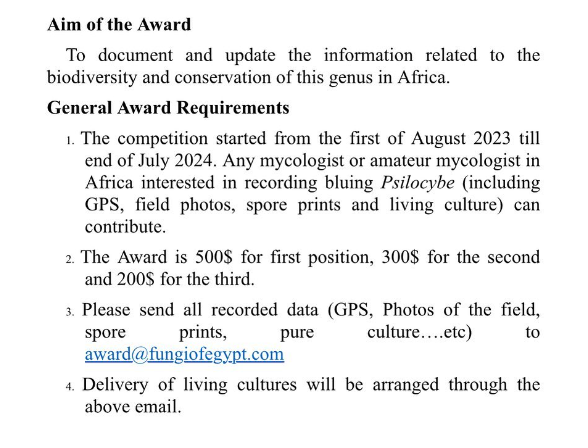Abdel-Azeem and Stamets’ Award for recording psilocybin-active Psilocybe species in Africa-2023
The Arab Society for Fungal Conservation (ASFC) and African Mycological Association (AfriMA) honored to announce Abdel-Azeem and Stamets’ Award for recording psilocybin-active Psilocybe species in Africa-2023.
More than 140 species of mushrooms are known to be psilocybin active, with likely more to be discovered, especially in Africa. Psilocybe is the best-known genus for psilocybin containing mushrooms. Psilocybe are regularly found in substrates such as soil, dung, wood, and mosses. Mushrooms are described as little brown mushrooms (LBMs) or little white mushrooms (LWMs) with a viscid cap when moist, dark to purplish black colored spores and a dark purple-brown spore print.
Some species feature a separable gelatinous pellicle, fringed whitish gill edges, and typically collyboid or mycenoid aspects. The caps and stems of some species may bruise a greenish-blue, when the mushroom is damaged, aged or drying, indicating the presence of psychedelic compounds.
Psilocybin-active Psilocybes are under-reported in Africa despite the likelihood that Psilocybe cubensis, the species most commonly cultivated and used throughout the world, originated on this continent. In particular, Psilocybe species are thought to have once been native to the Nile River regions, in southern Algeria, and elsewhere in Africa, before desertification created adverse conditions. Hence, the goal of this award is to record and collect these now rare species.
To date, studies have shown that psilocybin therapy is beneficial in relieving symptoms of treatment-resistant depression, obsessive compulsive disorder, and other mental health disorders. Psilocybin has also shown effectiveness at easing fear and anxiety in people with terminal cancer.
**Award requirements applicable only where legal**

